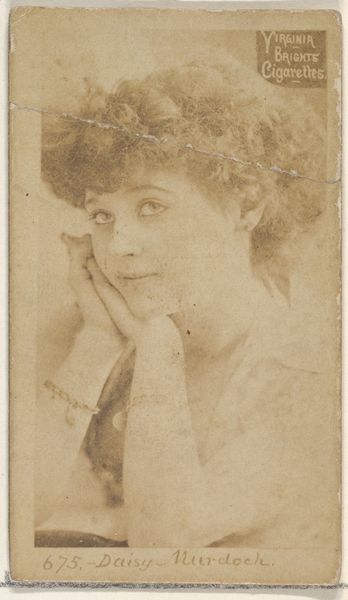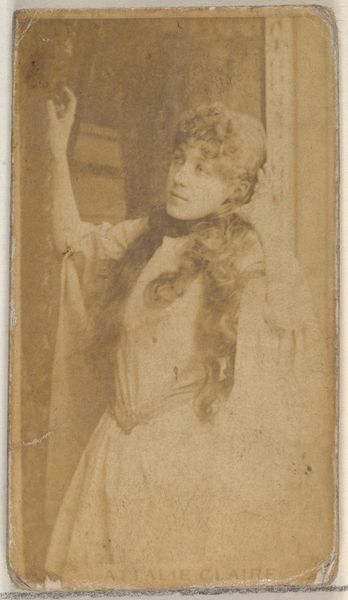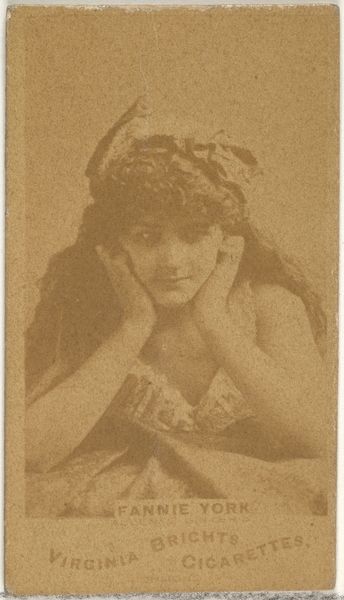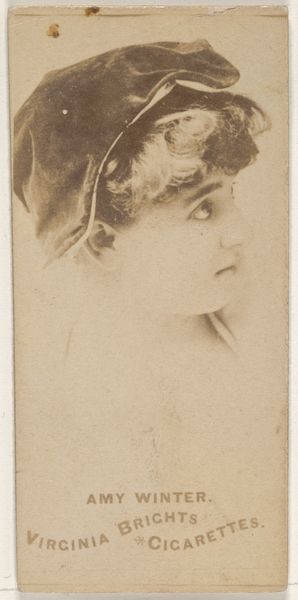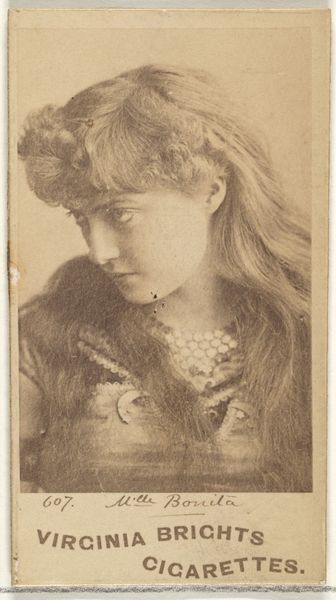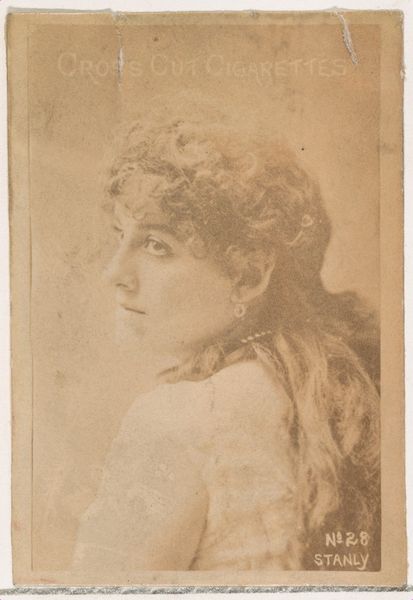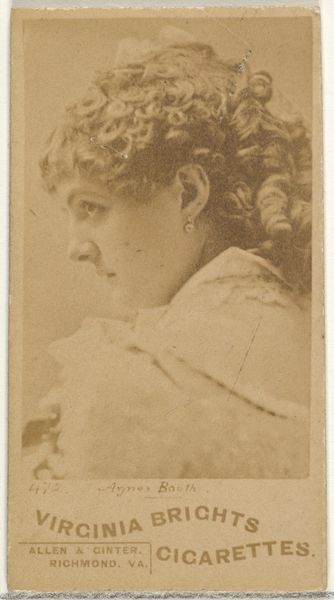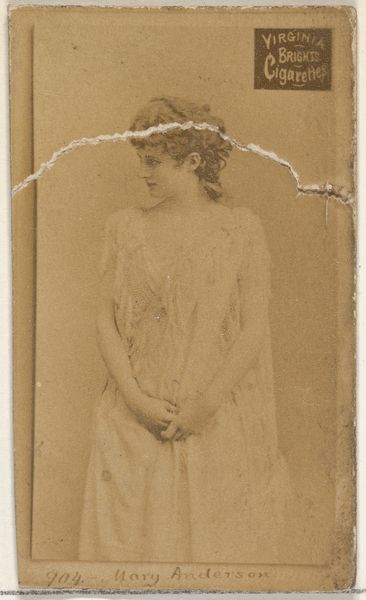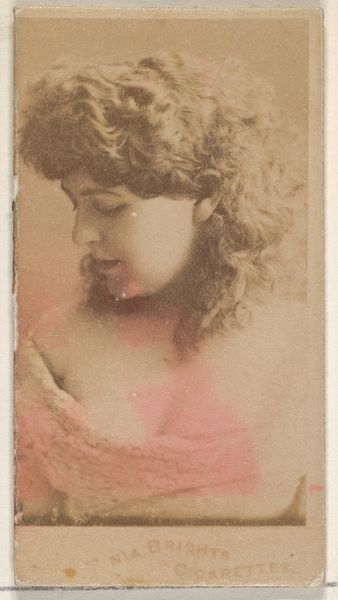
Card Number 544, Miss Kerkep, from the Actors and Actresses series (N145-7) issued by Duke Sons & Co. to promote Duke Cigarettes 1880s
0:00
0:00
drawing, print, paper, photography
#
portrait
#
drawing
# print
#
paper
#
photography
#
pencil drawing
Dimensions: Sheet: 2 11/16 × 1 3/8 in. (6.8 × 3.5 cm)
Copyright: Public Domain
Editor: This is "Card Number 544, Miss Kerkep," from the Actors and Actresses series, made in the 1880s by W. Duke, Sons & Co. to advertise Duke Cigarettes. It’s a small photographic print on paper. I find it striking how this promotional object elevates a commonplace commercial function, what are your initial thoughts on it? Curator: I'm immediately drawn to the relationship between labor and the aesthetic object here. The photograph is a product of multiple forms of labor: the photographer's, Miss Kerkep's as a performer, and the factory workers who mass-produced these cards. The materiality of the card itself—cheap paper stock, mass-produced print—speaks to its intended use: ephemeral advertisement. Does it complicate your viewing to realize it promoted tobacco? Editor: Absolutely, it's strange to consider this image, which seems almost like a miniature portrait, as something disposable. It does change my appreciation as a precious art object. How does the fact that this was made to promote Duke Cigarettes affects how you view its place in art history? Curator: Well, the act of consumption is really foregrounded. Duke Cigarettes sought to associate their product with glamour and celebrity, appropriating the likeness of Miss Kerkep. The image itself becomes a commodity, divorced from any inherent artistic value and now serving the interests of capital. Consider the means of production versus the supposed 'high art' it references. How does its availability—as a widely distributed cigarette card—challenge traditional notions of artistic value and uniqueness? Editor: So you’re suggesting the value shifts depending on the means and the motive, becoming an accessible form of art consumption. I hadn't considered how its production undermines traditional art appreciation. Thanks! Curator: Precisely! By examining the materials, labor, and the broader social context, we uncover a more complex story about the relationship between art, commerce, and consumption in the late 19th century.
Comments
No comments
Be the first to comment and join the conversation on the ultimate creative platform.

